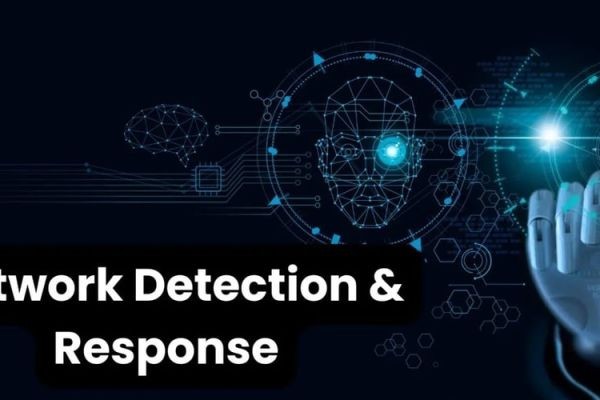In today's complex threat landscape, security teams need more than just logs and alerts—they need visibility, context, and actionable insights. That’s where Network Detection and Response (NDR) comes in. NDR solutions monitor network traffic to detect suspicious behavior, making them invaluable for threat hunting and incident response.
One of the best ways to understand and validate the effectiveness of NDR is by building a Threat Detection Lab. This blog explores how to build a robust threat detection lab using NDR and why it’s essential for developing a proactive cybersecurity posture.
Why Build a Threat Detection Lab?
Before diving into the how, let’s understand the why.
A threat detection lab allows organizations to:
-
Simulate real-world attacks without risking production systems
-
Test the efficacy of NDR tools in detecting various threat scenarios
-
Train SOC analysts in detecting and responding to threats
-
Fine-tune detection rules and policies
-
Evaluate integration with other tools like SIEM, SOAR, and firewalls
Think of the lab as your cybersecurity sandbox—safe, isolated, and tailored to your organization's needs.
Core Components of a Threat Detection Lab
To create a practical lab environment for threat detection with NDR, you'll need the following components:
1. NDR Platform
Choose an enterprise-grade NDR solution that supports real-time traffic inspection, machine learning-based detection, and forensic capabilities. Look for features like:
-
Full-packet capture
-
Encrypted traffic analysis
-
Threat intelligence integration
-
Alert enrichment with metadata
-
Lateral movement detection
Popular open-source and commercial options include Zeek (formerly Bro), Fidelis NDR, Vectra AI, ExtraHop Reveal(x), and Corelight.
2. Test Network Infrastructure
Simulate your network topology, including:
-
Internal and external segments
-
VLANs and subnets
-
Internet gateways
-
DNS, DHCP, and Active Directory servers
Virtualization platforms like VMware, VirtualBox, or cloud environments (AWS, Azure, GCP) can replicate enterprise networks cost-effectively.
3. Traffic Generators and Attack Simulators
Generate both benign and malicious traffic to validate your NDR. Use tools such as:
-
Iperf/Netcat – for legitimate traffic generation
-
Atomic Red Team – to simulate MITRE ATT&CK techniques
-
Metasploit – for exploit testing
-
Caldera by MITRE – for automated adversary emulation
-
Wireshark – to inspect and verify captured traffic
4. Monitoring and Logging Stack
Integrate NDR with:
-
SIEM (e.g., Splunk, ELK, QRadar) – for event correlation
-
SOAR tools (e.g., Cortex XSOAR, Swimlane) – to automate responses
-
Threat Intelligence Platforms – for IOC enrichment
This enables contextual and orchestrated threat detection and response.
5. Documentation and Playbooks
Establish detection and response workflows for various attack types. Use detection playbooks based on frameworks like MITRE ATT&CK and NIST.
Setting Up the Lab: Step-by-Step
Here’s how to go from planning to execution:
Step 1: Define Lab Objectives
Decide what you want to achieve. Common goals include:
-
Detecting command and control (C2) channels
-
Spotting lateral movement
-
Uncovering data exfiltration attempts
-
Testing encrypted traffic inspection
Step 2: Design Your Lab Network
Build a small but realistic network. Include endpoints, servers, routers/switches, and external internet simulation. Ensure it supports mirrored or TAP traffic for NDR visibility.
Step 3: Deploy the NDR Solution
Install the NDR platform in a position to inspect east-west and north-south traffic. For virtual labs, you can use port mirroring on virtual switches or span ports in physical setups.
Step 4: Simulate Normal and Malicious Behavior
Start with normal traffic—file transfers, DNS queries, user logins, browsing. Then introduce malicious activity:
-
Brute-force logins
-
DNS tunneling
-
PowerShell-based malware
-
Credential harvesting
-
Data exfiltration via HTTPS
Track how the NDR solution alerts and logs these behaviors.
Step 5: Tune and Optimize
Adjust detection rules to reduce false positives. Incorporate threat intelligence feeds to improve detection. Develop alert triage procedures and link alerts to playbooks.
Sample Scenarios to Test
Below are some key threat detection scenarios to simulate in your lab:
| Scenario | Objective |
|---|---|
| Lateral Movement via SMB | Detect credential reuse or remote execution |
| Command & Control Traffic | Spot beaconing behavior or suspicious DNS queries |
| Data Exfiltration | Identify large outbound transfers or protocol misuse |
| Insider Threat | Detect sensitive data access from atypical accounts |
| Living-off-the-Land (LotL) Attacks | Identify use of PowerShell, WMI, or PsExec |
Use MITRE ATT&CK as a guide to model your test scenarios.
Best Practices
To make the most of your NDR-powered lab:
-
Use isolated environments to avoid cross-contamination
-
Record all traffic for offline analysis
-
Document every test case including goals, steps, and outcomes
-
Regularly update your lab with new attack techniques
-
Review detection gaps and tune your NDR platform accordingly
Benefits of Using NDR in the Lab
NDR brings unmatched visibility into network behavior. Within your threat detection lab, it allows you to:
-
Detect threats without relying on endpoint agents
-
Visualize lateral movement paths
-
Analyze encrypted traffic with behavioral models
-
Conduct root cause analysis faster
-
Build confidence in your detection strategies before deploying to production
Final Thoughts
Building a threat detection lab with NDR is not just a technical exercise—it’s an investment in operational readiness. As cyber threats become more sophisticated, having a controlled environment to evaluate your detection and response capabilities is essential.
By combining NDR’s deep network visibility with realistic simulations, you empower your team to stay ahead of attackers and ensure that when a real threat emerges, your defenses are ready.

